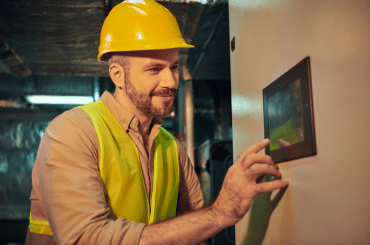
Technology is evolving rapidly, bringing new methods for identification and access management. Among the most promising are user authentication and facial recognition, which stand out for their efficiency and ability to enhance security. Whether in schools or businesses, these technologies offer significant advantages.
1. Securing Access to Facilities
One of the main concerns for schools and businesses is access control. With facial recognition and user authentication, only authorized individuals can enter specific areas, reducing risks related to unauthorized access, theft, or security threats. Schools can prevent outsiders from entering campuses, while businesses can restrict sensitive areas to designated employees.
2. Enhancing Attendance and Time Tracking
Traditional attendance systems based on manual check-ins or ID cards are often inefficient and prone to fraud. Facial recognition automates this process, ensuring that attendance records are accurate and preventing buddy punching (where an employee or student checks in for someone else). This is particularly useful in workplaces that require strict time tracking for payroll or compliance purposes.
3. Improving Operational Efficiency
Authentication systems streamline access to systems and resources. Employees or students can log into computers, apps, or restricted platforms without needing to remember complex passwords. This not only saves time but also reduces the risk of phishing attacks and credential theft. In businesses, it simplifies access to corporate networks, cloud services, and internal databases.
4. Strengthening Data Security
With biometric authentication, sensitive data remains protected. Unlike passwords, which can be stolen or shared, facial recognition provides a unique and non-transferable layer of security. Businesses handling confidential information, such as financial records or customer data, can significantly reduce risks by integrating biometric authentication into their security protocols.
5. Creating a Frictionless User Experience
Users no longer need to remember multiple passwords, carry access cards, or go through long verification processes. With facial recognition, access is instant, making the experience more seamless and efficient. Schools can use it to automate student check-ins at libraries or classrooms, while businesses can facilitate secure and quick logins for employees and clients.
6. Reducing Physical Contact and Hygiene Risks
In a post-pandemic world, reducing physical touchpoints is a priority. Facial recognition eliminates the need to touch surfaces such as fingerprint scanners or keypads, making it a safer and more hygienic option in high-traffic environments like schools and offices.
Conclusion
User authentication and facial recognition are revolutionizing security and efficiency in schools and businesses. These technologies enhance security, streamline operations, and provide a seamless user experience. As adoption increases, they will play an even bigger role in shaping the future of education and corporate security.
At Maharat 71, our mission is to provide valuable insights and reliable information to help our customers make informed decisions. Whether you're exploring new technologies, looking for expert advice, or seeking solutions tailored to your needs, we're here to guide you every step of the way. Your success is our priority!